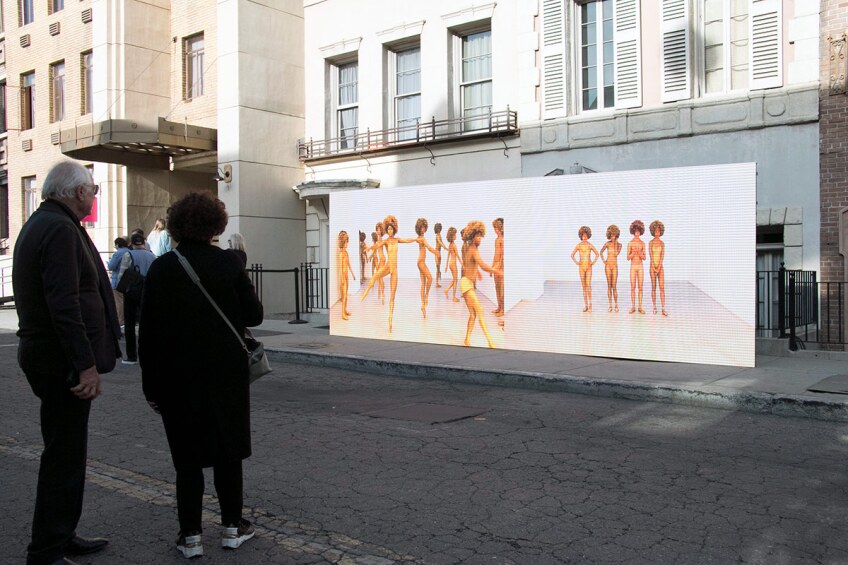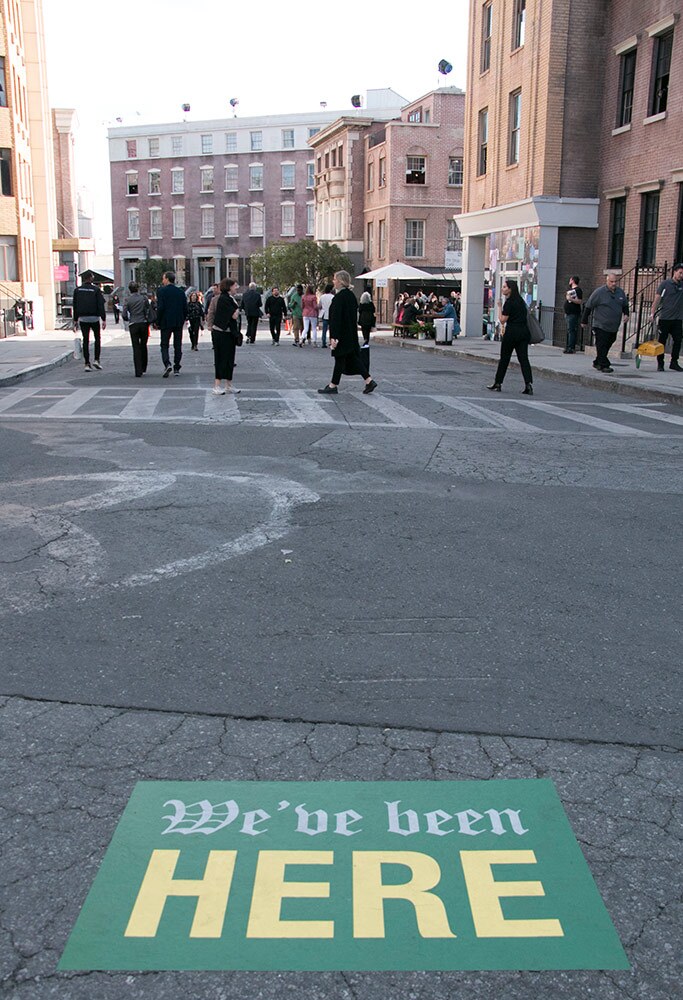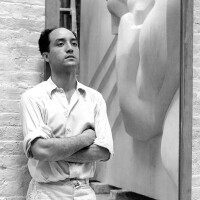Frieze Los Angeles Excavates the City's Multilayered Stories

Some might consider a movie studio to be quintessentially Los Angeles. The city is known for Hollywood and the film industry, and both are often associated with clichéd and oversimplified stereotypes: an idyllic place where movies are made, where dreams come true, where the weather is (supposedly) always nice. But for Frieze Projects 2020, co-curators Rita Gonzalez and Pilar Tompkins Rivas did not lean on the romanticized aspect of the art fair’s unique Paramount Pictures Studios location. Instead, they curated projects that elevate the complexities of an extremely diverse, multicultural and layered city by delving deeply into its histories and associations.
“I always think about L.A. being a layered site. It’s the contemporary city we know today, it was once Mexico, it was part of Spain’s colonization of the Americas and it is still an Indigenous territory — we are still on Indigenous land,” Rivas Tompkins commented. “That sense of layering of place was a unique place to think about in the backlot where you have New York layered over L.A., layered on top of Mexico, layered on top of Spanish colonies, layered on top of Indigenous people.”
In her performance piece, Mexican artist Tania Candiani reminds us that the city we occupy is not far in distance nor time from the concentration camps that incarcerated Japanese Americans and the current concentration camps at the U.S./Mexico border that still hold detained migrant children and families. She, along with other performers, will reenact the forced labor of Japanese American women interned at Manzanar and the Santa Anita Assembly Center during World War II in her piece, “Camouflage” (2020). Inspired by a series of photographs taken by Dorothea Lange, entitled “Making camouflage nets for the War Department” (1942), Candiani and other performers will weave textiles and make visible the manual labor of the women’s work through choreographed and collective movement. “When you weave, you create bridges,” Candiani shared in an interview with “Artbound.” “It’s what happens with textile, textile is a language, it’s a text. We’re not writing down anything with words, but I hope that we’re creating bridges between what happened in the past and what is happening now, in order to not make the same mistakes.” Performers will physically take up space with their performance and the structural product their labor produces, while recalling the legacy of xenophobia, racism and fear.





Candiani’s work is one of 16 multimedia, interdisciplinary projects curated by Gonzalez and Tompkins Rivas for the international art fair. By their very definition, art fairs cater to collectors, art advisors and galleries — roles dominated by the white and wealthy. Art fairs are places that I, even as an arts writer and artist, have felt excluded from or immediately out of place in as a Black woman. But the projects at this year’s Frieze LA make me feel differently — they urge viewers to recognize multiplicities of cultures and place, and to ask questions about who and what is seen or unseen.
Artists examine race, culture, representation, movement and rest, as well as the real versus the fabricated, setting a tone that is noticeably more political than the fair’s first iteration. “There are a lot of real discussions that are going on in film and media right now about equality and equity and diversity,” remarked Gonzalez in an interview with “Artbound.” “It seemed to us, to not get a sense of that discourse, that kind of cultural politics of the moment, would just be really flat.”

Multidisciplinary artist Vincent Ramos parsed through the Paramount archive archive to gather inspiration for his project on Latinx representation in film and media. His commissioned installation, “Wolf Songs for the Dead” (2020), looks at the way Chicanos and Latinos have been portrayed in or left out of film.

Jibade-Khalil Huffman centers the power of Black women in his billboard-like, outdoor sculpture, “Mayday” (2018), which showcases Grace Jones in “A View to Kill” without the James Bond thriller’s namesake; artist and activist Patrisse Cullors will invite participants to engage in a collective electric slide, empowering people of color to take up space and move in community through her performance, originally performed as “Fuck White Supremacy, Let’s Get Free” (2019); Lorna Simpson explores action and rest through the movement of Black ballet dancers, spray-painted gold, in her two-channel video, “Momentum” (2011).


Los Angeles-based artist, Gabriella Sanchez, plays with language, text, interpretation and the spaces that fit in between Chicanx and American culture. She invites viewers to engage with her work in the form of three large-scale, vinyl banners that resemble recognizable signage or advertisements one might see hanging on buildings across Los Angeles. Her site-specific installation, “HOMMES, HOMES, HOMES” (2020), plays with the subtleties of associations and prompts the viewer to reflect on the potential of pluralities of meaning. Each banner contains one of the three words that give way to the title: one, the French word for men, another, the English word for a residence, and the other in Caló (the Chicanx Pachuco dialect), meaning homie, brother or friend.

Each text is colored by the same matte gold, but made distinct by their own typography and background image. The piece encourages viewers to question how the context of their identity and culture influence their own assumptions and impressions, while acknowledging that multiple versions of meaning, truths and narratives exist whether or not we immediately recognized them all.






“If we can have important conversations in the context of an art fair, I think that’s a great thing,” Tompkins Rivas noted. “The art market is intertwined with the museum field, that in turn is rooted in the curatorial practice, and that curatorial practice is rooted in who you make choices around in terms of representation, who you historicize, and that in it of itself, is how history is told back to us.”









